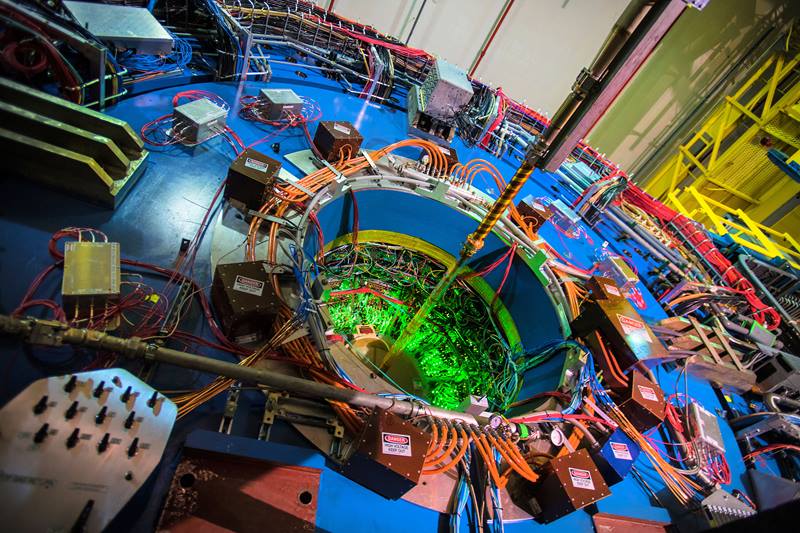In the realm of nuclear physics, recent advancements have unveiled an extraordinary phenomenon, allowing scientists to glimpse the enigmas concealed within atomic nuclei. The nuclear core—an intricate domain characterized by protons and neutrons bound into an extraordinary tapestry of quantum interactions—has long baffled scholars intent on deciphering its profound complexities. This exposé promises to illuminate the novel insights that emerge from the innovative methodologies employed in this groundbreaking research, which endeavor to penetrate the veils of subatomic existence.
The nucleus, often likened to a dynamic microcosm or the beating heart of an atom, serves as a nexus where matter’s fundamental forces coalesce. Within this nucleus, protons and neutrons dance in a perpetual ballet, orchestrated not just by the electromagnetic force but also by the enigmatic strong nuclear force—a binding energy that overcomes the repulsive forces between the positively charged protons. For decades, physicists have sought to unravel the structural arrangements and interplay of these nucleonic entities, yet their fundamental nature remains shrouded in metaphorical darkness.
Traditionally, methodologies for studying nuclear structures have relied heavily on indirect observations, utilizing particle collisions and scattered detection to infer properties of nuclei. However, recent breakthroughs in entanglement techniques have ushered in a new epoch in nuclear examination, permitting scientists to witness these constituents in a relatively direct manner. The employment of advanced photonic systems facilitates a nearer approach to capturing and interpreting the ephemeral dance of nucleons, thereby providing an unprecedented window into their enigmatic behaviors.
Entanglement, typically a concept associated with quantum mechanics and the behavior of particles at the subatomic level, emerges here as a transformative factor. The use of entangled photons—particles of light that exhibit interdependent properties—has permitted researchers to amplify the signals emanating from nuclei during analysis. This innovation, much like using a finely tuned telescope to peer deep into the cosmos, allows for unprecedented clarity within the quantum soup that comprises the atomic nucleus.
One of the key achievements of this research is not merely in observing nuclei, but in ‘seeing’ the intricate interactions that delineate nuclear forces. For example, the novel observation of new types of entanglement within these systems manifests as a clandestine language—one that articulates the fundamental laws governing nuclear stability and decay. Such revelations have the potential to reshape current models of nuclear physics, which, while robust, often encounter discrepancies when confronted with experimental data.
Intriguingly, this burgeoning field of study does not merely extend its implications toward theoretical physics. The insights gleaned from these microscopic explorations resonate deeply within practical applications, too. Understanding nuclear forces better unlocks potential advances in fields ranging from energy production—where nuclear fission continues to be a contentious issue—to the development of new materials with enhanced structural integrity. For instance, insights from these studies may herald innovations in nuclear batteries or even medical therapies utilizing radioactive isotopes.
As with all pioneering scientific endeavors, these breakthroughs invite speculation regarding their implications for the future. To envision the atomic nucleus through this new lens raises questions about the limits of human understanding, pushing the frontiers of knowledge into uncharted territories. How far can the lens of entanglement extend? Could it lead to an era of miniature explorations of matter that fundamentally alters our interaction with the atomic realm? The scientific community stands on the cusp of reimagining its approach to the architecture of matter itself, inspired by the prospect of deeper understanding.
The notion of ‘seeing’ nuclei for the first time conjures visions not merely of observation but of interaction—a dynamic exchange in which the observer becomes part of the phenomenon they scrutinize. This intermingling of roles propels a reevaluation of the established metaphysics underpinning particle physics and challenges the dichotomy between the observer and the observed. It suggests that perhaps the laws of nature are not merely to be observed but engaged with, presenting a delightful paradox that continues to invigorate intellectual inquiry.
Furthermore, the implications of these findings extend far beyond the immediate confines of nuclear physics. As society grapples with the pressing challenges of energy sustainability and technological advancement, the insights facilitated by this research may yield novel paths toward solutions. Developing a nuanced understanding of the forces governing atomic interactions could refine existing technologies or inspire innovative applications, melding scientific knowledge with societal benefits.
In conclusion, the capability to glimpse nuclei for the first time represents an extraordinary leap forward in our comprehending of the atomic world. It invites an interpretation of science as a living narrative; one that evolves through inquiry and discovery. Approaching the nucleus with the tools of entanglement reshapes not only the landscape of nuclear research but also our collective perspective on the universe. As science relentlessly seeks to illuminate the unseen, humankind inches closer to unveiling the intricate artistry of the cosmos, one nucleus at a time.












